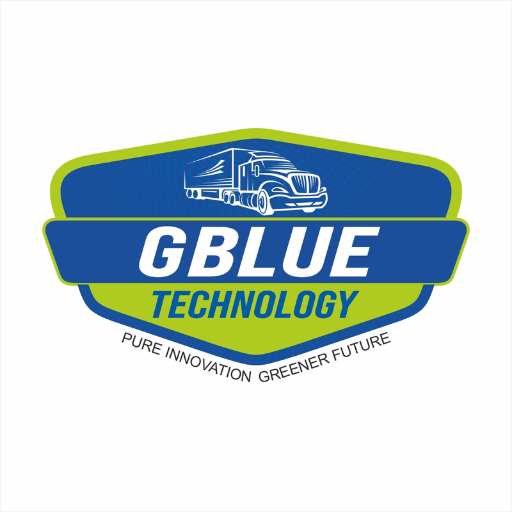What is SCR
Driving Progress, Reducing Pollution
Among the technologies developed to meet these rigorous standards,SCR stands out as an important innovation.
What is SCR?
- SCR stands for Selective Catalytic Reduction. This is a key technology for reducing harmful emissions in diesel engines.
- The SCR process converts nitrogen oxides (NOx) into nitrogen (N₂) and water vapor (H₂O). This is achieved through a chemical reaction that takes place in the presence of a catalyst and a reductant, basically AdBlue.
- By converting these harmful NOx emissions, SCR systems play a crucial role in improving air quality and meeting strict environmental regulations for diesel vehicles and equipment. The technology is widely adopted across various industries to help reduce the environmental impact of diesel power.
AdBlue Role in SCR
- AdBlue is a critical component in the Selective Catalytic Reduction (SCR) system. It's a solution
- Chemical Reaction: Chemical Reaction: The ammonia then reacts with Nitrogen Oxides (NOx) in the SCR catalyst. This chemical process converts the harmful NOx emissions into harmless nitrogen (N₂) and water vapor (H₂O), which are then safely released into the atmosphere.
- Outcome: This process significantly reduces NOx emissions by up to 90%, helping vehicles meet stringent emission regulations while maintaining engine performance and promoting a cleaner environment
How SCR Works
- Combustion Process: Diesel engines burn fuel, producing exhaust gases containing Nitrogen Oxides (NOx) and Particulate Matter (PM).
- Exhaust Flow: Exhaust gases exit the engine and pass through the Diesel Particulate Filter (DPF), which traps and burns off PM.
- AdBlue Injection: After the DPF, a dosing valve injects AdBlue into the exhaust stream. DEF consists of urea and water.
- Electronic Control Unit (ECU): The ECU monitors and adjusts the amount of AdBlue injected based on various parameters, ensuring optimal NOx reduction.
- Decomposition: The heat in the exhaust causes DEF to decompose into ammonia (NH₃) and carbon dioxide (CO₂).
- SCR Catalyst Reaction: In the SCR catalyst, ammonia (NH₃) reacts with NOx, converting these harmful gases into harmless nitrogen (N₂) and water vapor (H₂O).
- Emission Reduction: The final products, nitrogen and water vapor, are released through the exhaust, significantly reducing NOx emissions by up to 90%.
- Final Outcome: The vehicle emits much cleaner exhaust, meeting stringent emission standards while maintaining engine performance.
Advantages of SCR Systems
Selective Catalytic Reduction (SCR) systems offer several key advantages that make them an essential technology for reducing harmful emissions in diesel engines.
- Effective NOx Reduction: One of the primary benefits of SCR is its ability to significantly reduce nitrogen oxide (NOx) emissions. SCR systems can achieve up to a 90% reduction in NOx, helping diesel-powered vehicles and equipment meet stringent environmental regulations.
- Fuel Efficiency: In addition to emissions control, SCR technology also allows engines to operate more efficiently, resulting in improved fuel economy. By converting harmful NOx into harmless nitrogen and water, SCR systems enable engine tuning optimizations that conserve fuel.
- Longevity: Longevity: SCR systems are designed to have a long service life, typically lasting the lifetime of the vehicle or application with proper maintenance. This ensures reliable emissions control and reduced maintenance costs over the long term.
Risks of Using Duplicate AdBlue
Using duplicate or poor-quality AdBlue your vehicle can have serious consequences for both the SCR system and your vehicle.
- Blocked Injectors: Low-quality AdBlue can lead to clogging or crystallization in the dosing injector that sprays the fluid into the exhaust stream. Blocked injectors can disrupt the correct mixing of AdBlue and exhaust gases, reducing NOx reduction efficiency.
- Increased Maintenance Costs: Repairing or replacing damaged SCR components, such as the catalyst or dosing system, can be expensive.
- Catalyst Damage: Duplicate AdBlue may contain impurities or incorrect urea concentrations, which can damage the SCR catalyst. Contaminants like metals or other chemicals can poison the catalyst, reducing its efficiency or rendering it useless.
- System Malfunctions: Sensors in the SCR system may detect inconsistencies caused by fake AdBlue, leading to error codes or warnings on the dashboard. The system may go into limp mode, reducing engine performance to protect components.
Recommendations for using AdBlue
- Always use certified AdBlue that meets ISO 22241 standards.
- Avoid Using AdBlue from IBC Tanks on Roadside.
- Check for authenticity by buying from trusted suppliers and looking for proper labeling.
- If you've accidentally used duplicate AdBlue, flush the SCR system immediately and replace it with genuine AdBlue to minimize damage.
Conclusion
Selective Catalytic Reduction (SCR) technology has revolutionized the way diesel engines control harmful NOx emissions. By employing a carefully designed catalyst and injecting AdBlue, SCR systems effectively reduce NOx levels by up to 90%. This not only contributes to cleaner air quality and public health but also promotes a more sustainable transportation industry. The widespread adoption of SCR in commercial vehicles, marine engines, and industrial equipment has significantly impacted air pollution and climate change mitigation. As we move toward a greener future, SCR technology remains a crucial component in ensuring cleaner and more efficient diesel engine operation.
